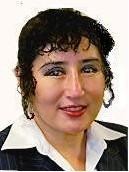 |
Digital Ecosystems and Business Intelligence Institute Curtin University, AustraliaWebsite: http://www.business.curtin.edu.au/index.cfm?profile=Elizabeth_ChangEmail: |
Prof Elizabeth Chang has 20 years of experience in Academia and Industry. She is an expert on Ontologies, XML and Semi-structured databases, Data Mining for Business Intelligence, Collaborative systems, Human System Interfaces and Service Oriented Computing. She has strong skills in research management and capable of managing large teams and Multiple projects and has track record to deliver the outcomes on time, within the constraint resources and meeting the tough requirements. She has obtained 7 ARC grants (DP and LP); Tier 1 Institute Funds, Fellowship Funds, Industry Funds of total over $10 million. She has supervised 18 PhD students to completion. She has over 360 publications including 4 books, 25 book chapters, 51 journal articles and 35 Keynote speeches. She has an h-index of 20 (Google Scholar). She started from zero and has gradually created a Tier 1 Research Institute with 16 Post-doc fellows and 60 enrolled PhD students and 40+ approved HDR students (Higher degree by Research) in DEBII (Digital Ecosystems and Business Intelligence Institute, the Tier 1 Research Institute of Excellence) since 2003. The largest research institute in ICT in Australia. She led the Institute produced 10% of total Curtin Publication output several years in a row; Obtained Dean's award, Chancellor Awards, VC and DVC awards each year over the last 6 years;Achieved #1 RPI performance in CBS and one of the top performers in Curtin Six years in a row since 2004. As One of Chief Investigators, Professor Chang obtained over $10million competitive funds.
Professor Chang has a PhD and research Master in Computer Science and Software Engineering from La Trobe University, Australia
Cyber-Physical Systems and the Web of Things as an Embodiment of Digital Ecosystems
Digital Ecosystems represent the union between the digital world and real world. The Web of Things addresses connecting real world object into the Internet through Sensors and Actuators. Cyber-Physical Systems provide a unified framework for connecting the abstract computational artifacts with the physical world. This allows for robust and flexible architectural design with multi-scale dynamics and integrated wired and wireless networking for managing the flows of mass, energy, and information in a coherent way. An example of Cyber Physical Systems is connecting sensors (which provide information from the physical world ) to the internet ( which represents the cyber world). Cyber-Physical Systems has recently been listed as the No.1 research priority by the U.S. President’s Council of Advisors on Science and Technology. Cyber-Physical Systems framework has the capability to tackle numerous scientific, social and economical issues. However, building Cyber-Physical Systems is not a trivial task. It requires a new ground-breaking theory that models cyber and physical resources in a unified framework. Digital Ecosystems constitute a superset which includes these Cyber Physical systems .In contrast the Web of Things can be used as a framework for realization of Cyber-Physical Systems and therefore it constitutes a subset of the Cyber Physical Systems. Thus the underlying theories of Digital Ecosystems and the Web of Things will help to provide important pointers to the development of these Cyber Physical Systems. None of the current state-of-the-art methods are able to overcome the challenges of building such Cyber Physical Systems due to the fact that computer science and theories underlying the real world have developed independently based on overly-simplified assumptions of each other. For example, many key requirements (e.g. uncertainty, inaccuracy, etc.) crucial to physical systems are not captured and fully dealt within the computer science research agenda. Similarly computational complexity, system evolution, software failure and failures of computer hardware are often ignored from the viewpoint of theories of the physical world , which treats computation as a precise, error-free, static 'black-box'. The solution to Cyber-Physical Systems must break the boundary between the cyber world and the physical world by providing a unified infrastructure that permits integrated models addressing issues from both worlds simultaneously. Therefore, in this keynote, we explore an approach to such an infrastructure using the framework of Digital Ecosystems and the Web of Things